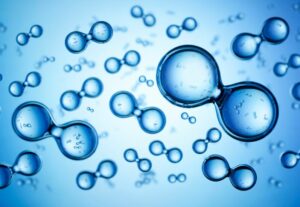The search for scalable, low-cost pathways to green hydrogen has intensified as electrolysis-based production confronts rising electricity costs and infrastructure constraints.
Photocatalytic hydrogen generation, long viewed as theoretically promising but technologically immature, may now be entering a more practical phase. Researchers from the University of Bayreuth report the development of a nickel-based photocatalyst that produces hydrogen directly from seawater using only sunlight, eliminating the need for purified water, added reagents, or co-catalysts.
The University of Bayreuth team, led by Professor Shoubhik Das, notes that the new catalyst operates without sacrificial agents and withstands chloride corrosion, a critical limitation in most seawater-splitting technologies. Chloride ions, present at concentrations of roughly 19,000 mg/L in seawater, commonly degrade catalytic materials or trigger competing reactions that suppress hydrogen evolution. The team’s results, published in the Journal of the American Chemical Society, indicate hydrogen production rates exceeding those of most single-component photocatalytic systems evaluated to date, addressing one of the core performance barriers that has kept photocatalysis from approaching commercial relevance.
Green hydrogen production today is dominated by electrolysis, which remains energy-intensive and highly dependent on the availability of low-cost renewable electricity. Meanwhile, freshwater access and desalination requirements create additional constraints in regions where large-scale hydrogen projects are planned. A seawater-to-hydrogen pathway driven by sunlight offers an alternative that directly sidesteps these barriers, if catalytic stability, efficiency, and scalability can be proven outside laboratory settings.
Das emphasizes that the catalyst’s resilience to seawater constituents, including chloride and other dissolved ions, was central to the team’s approach. Stability and selectivity have historically undermined claims of direct seawater splitting, with many systems failing to maintain performance beyond short test cycles. The Bayreuth group’s findings indicate a material architecture capable of sustained operation without co-catalysts or protective layers, simplifying system design and potentially reducing cost.
Still, the work represents an early-stage scientific milestone rather than a deployed solution. Photocatalytic hydrogen production remains far from matching electrolyzers in output scale, operational predictability, or commercial deployment pathways. The challenge ahead lies in translating laboratory efficiencies into realistic module designs, understanding long-term degradation, and validating performance in real-world sunlight conditions that include spectral shifts, fluctuating intensity, and biofouling.
Stay updated on the latest in energy! Follow us on LinkedIn, Facebook, and X for real-time news and insights. Don’t miss out on exclusive interviews and webinars—subscribe to our YouTube channel today! Join our community and be part of the conversation shaping the future of energy.

